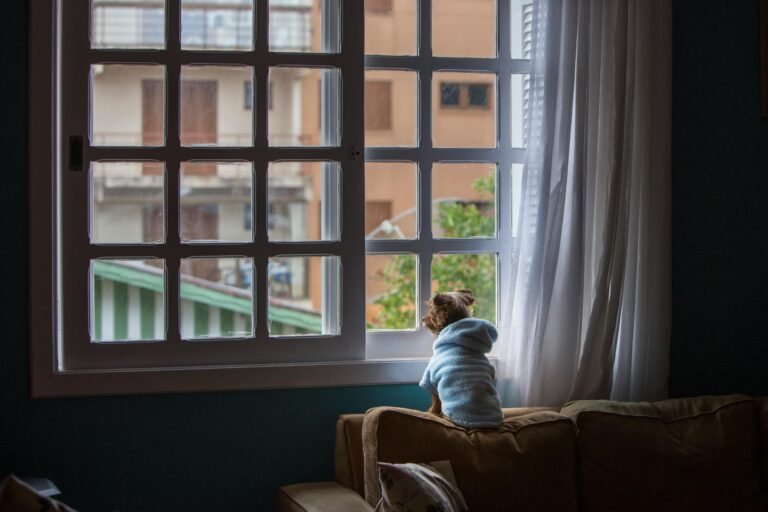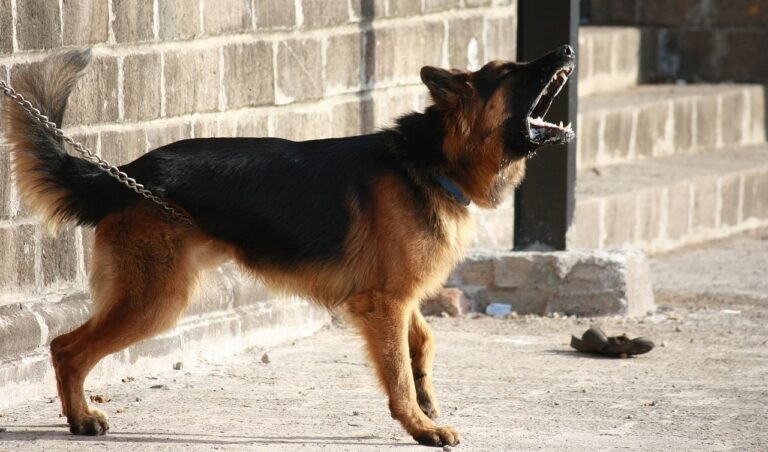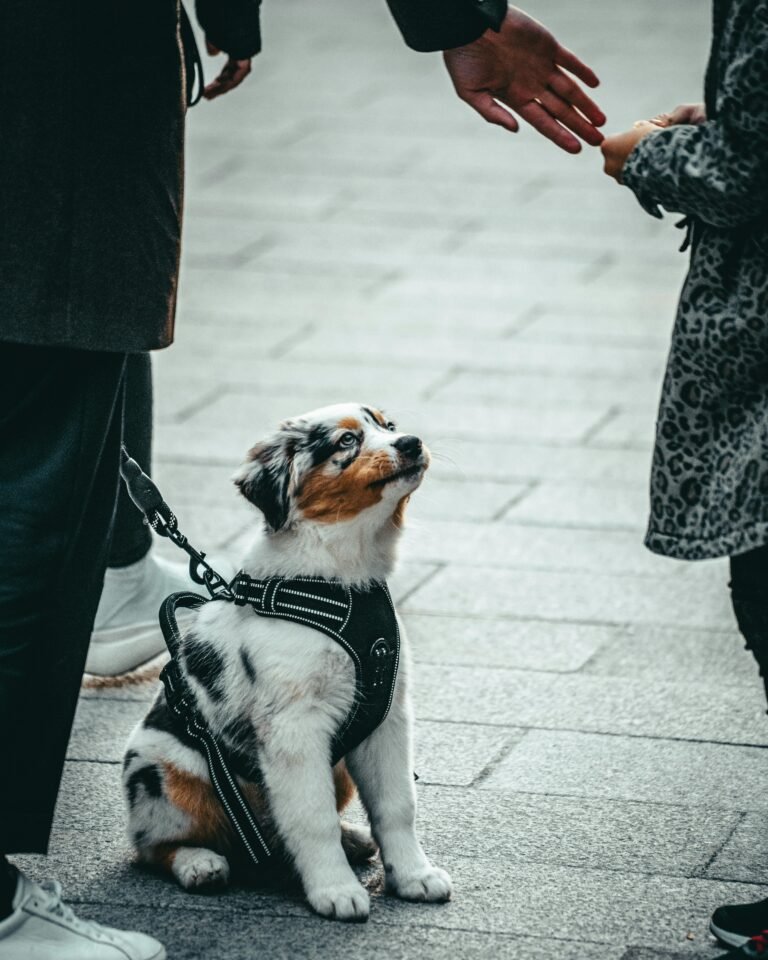Introduction
Does your dog go from zero to zoomies the moment something exciting happens—and then struggle to settle down? Teaching an off-switch helps your dog learn how to relax after high-energy moments. It’s one of the most valuable life skills you can teach because it brings balance: your pup learns when it’s time to play and when it’s time to chill. In this guide, we’ll show you how to teach your dog to calm down on cue using positive reinforcement and smart structure.
What Is an “Off-Switch”?
An off-switch means your dog can switch from arousal (play, training, excitement) to calm behavior on command. It doesn’t suppress their enthusiasm—it teaches emotional regulation. Dogs who learn this are better companions at home, in public, and during training because they can focus and recover quickly from stimulation.
Why It’s Important
- Prevents overstimulation: Helps dogs who get hyper after play, training, or walks.
- Improves obedience: A calm dog can listen and think clearly.
- Reduces anxiety: Encourages relaxation and self-soothing.
- Strengthens household harmony: Great for dogs living with kids, guests, or multiple pets.
Signs Your Dog Needs an Off-Switch
- Has trouble settling after play or walks
- Constantly demands attention or toys
- Whines or paces when excitement ends
- Jumps or barks excessively at visitors
If any of these sound familiar, it’s time to introduce structured calm training.
Before You Start
Set your dog up for success with the right environment:
- Pick a quiet space with few distractions.
- Have soft treats ready for rewarding calm behavior.
- Keep sessions short—5 to 10 minutes at first.
Step 1: Build Calm Associations
Dogs often stay hyped because excitement = attention. To change that pattern, start rewarding calm behavior. When your dog lies quietly, sighs, or chooses to rest—quietly praise and offer a treat. Over time, your dog learns that relaxing pays off.
Step 2: Introduce a Mat or Bed
Designate a spot as your dog’s “relax zone.” This helps them recognize where calm behavior is expected.
- Place a mat or bed on the floor and reward your dog for stepping onto it.
- Gradually reinforce sitting, then lying down, and eventually resting their head.
- Add a cue like “settle” or “relax” once your dog consistently lies calmly on the mat.
This foundation makes it easier to cue relaxation in any environment later on.
Step 3: Play-Then-Settle Exercise
This is the heart of off-switch training. You’ll teach your dog to switch gears quickly between high and low energy.
- Engage your dog in a short, exciting game—like fetch or tug—for 20–30 seconds.
- Then stop suddenly, stand still, and use your cue (“settle,” “relax,” or “quiet”).
- Wait silently for calm behavior: your dog stops moving, sits, or lies down.
- Once calm, softly praise and reward.
- Resume play for another round—then repeat the settle cue.
This teaches that calmness ends the pause and earns more fun—an incredibly effective feedback loop.
Step 4: Gradually Add Distractions
Once your dog can settle indoors, test their skills in slightly more stimulating environments:
- Practice in the yard, then on walks.
- Reward relaxation near mild distractions—like distant noises or people walking by.
- Over time, practice in busier spots like parks or cafes.
Your goal: your dog can relax even when life is exciting around them.
Step 5: Use Calming Routines
Structure helps dogs predict when to wind down. Try these strategies:
- End play sessions with a calm cue and gentle petting.
- After walks, have a short quiet time before meals or toys.
- At night, dim lights and reduce activity 30 minutes before bedtime.
Dogs thrive on consistent cues that signal “it’s time to relax.”
Step 6: Teach “Go to Bed” or “Place” Command
This cue pairs perfectly with off-switch training. Once your dog knows how to settle on their mat, start directing them there on command. Over time, “place” becomes their cue to decompress automatically during busy moments like meals or guests arriving.
Step 7: Combine with Other Training
Blend off-switch training with impulse control games, recall, and obedience work. For example:
- Practice “settle” after a recall from play.
- Alternate “sit-stay” and “relax” to improve patience.
- Reward quiet waiting before meals or walks.
Common Mistakes to Avoid
- Overusing verbal cues: Don’t repeat “settle” constantly—wait for the behavior, then mark it calmly.
- Expecting instant calm: Excited dogs need time to decompress; celebrate small steps.
- Using punishment: Correcting hyperactivity can create stress, which makes calmness harder.
- Ignoring success: Quiet moments often go unnoticed—catch them and reward!
Advanced Calm Cues
Once your dog understands the basics, you can add variety:
- “Take a breath” cue: Pair a soft exhale sound with a calm reward—dogs pick up on your relaxation energy.
- Massage or touch cues: Gentle stroking while repeating the cue reinforces relaxation through physical comfort.
- Environmental triggers: Use a calming playlist or scent to create a multisensory relaxation routine.
Why Off-Switch Training Works
Dogs naturally live in the moment—they don’t have built-in self-control for excitement. Teaching an off-switch gives them the structure they crave. It replaces frantic energy with focus, helping your dog feel secure even in stimulating settings. Over time, this training reduces reactivity, builds emotional balance, and makes daily life calmer for everyone.
Conclusion
Training an off-switch doesn’t mean dulling your dog’s spirit—it helps them channel energy wisely. By teaching your dog when to play and when to relax, you build confidence, trust, and emotional control. The result? A well-balanced companion who can enjoy excitement one moment and nap peacefully the next. With consistency and calm leadership, your dog will learn that relaxation is just another rewarding part of life with you.






